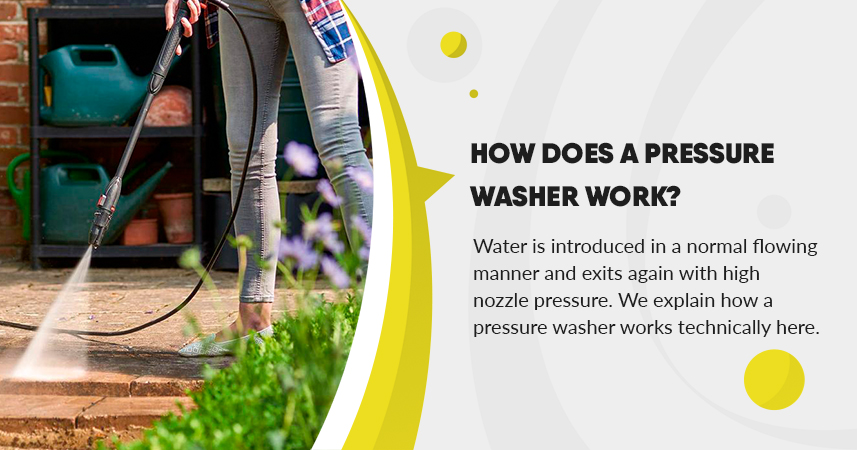


How a well-known and widespread pressure washer works schematically follows a simple principle. Water is sucked in by technically generated negative pressure. As the heart of the motor and pump unit, a swash plate rotates and opens and closes pressure and suction valves mounted in three pistons.
Mechanical power is converted into hydraulic energy
The pump motor in the pressure washer generates rotary motion electrically or by combustion. By means of a drive shaft, this drives the swash plate, which is bordered by three piston shoes with mounted pistons. Their “uneven” shape ensures that each piston slides back and forth once with each revolution.
Piston springs exert pressure on each piston in the direction of the swash plate. The “inclined” and “slanted” disc pushes the piston parallel to the drive shaft towards the engine. The resulting negative pressure opens a suction valve that fills the created space with inflowing water. When the piston “reverses” again, it pushes the incoming water through a pressure valve to the jet pipe to which the unit hose is connected. When a pressure washer pulsates, the uniform downward and upward movements of one or more pistons are disturbed or slowed down.
Also of interest: What to look for when buying a pressure washer?
Operation of the trigger mechanism by demand request
The following way of operation makes the unit easy to use:
- gun nozzle is opened and the pressure is reduced
- the piston spring “takes over” the positioning of the piston in the initial position
- an electrical contact in the pressure switch closes the circuit
- the pump motor starts again
- when the gun nozzle is closed, the pressure on the piston breaks the circuit
- when the gun is opened again, the pressure drop “jacks” the piston back to its original position
- the circuit closes and the pump motor starts again.
It should be noted that the nominal mechanical force of the pump cannot be completely transferred to the hydraulic energy. On the transport path of the compressed water, there is an unavoidable loss of pressure due to the type of function. The outlet or working pressure in bar is relevant.
Also of interest: How to use a Pressure Washer Safely and Effectively


